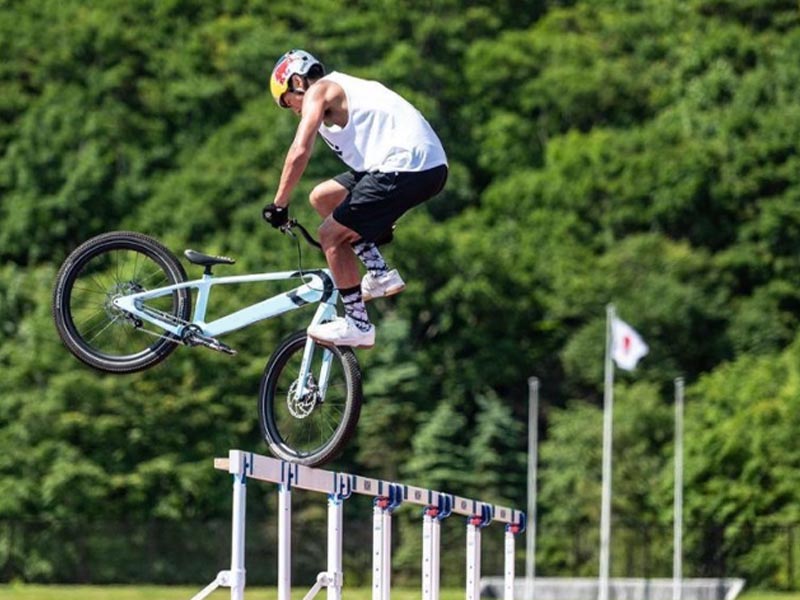The first thing you notice about a Bike Trial isn’t speed—it’s silence and stillness. A rider freezes mid-course, bike balanced like it’s defying gravity, eyes locked on the next obstacle.
Then, with a quick hop and a burst of power, they land perfectly on a ledge no wider than your shoe. No foot touches the ground. In this sport, that’s the definition of victory.
Born in Spain in the late 1970s, Bike Trials evolved from motorcycle trials, where riders aimed to clear obstacles without “dabbing” a foot. Early cyclists turned pallets, boulders, and backyard junk into playgrounds for balance and skill.
By the 1980s, formal competitions emerged, and the Union Cycliste Internationale (UCI) gave the sport global recognition. Today, Bike Trial is a respected competitive discipline with world championships and a passionate, ever-growing community.
The Core of Bike Trials
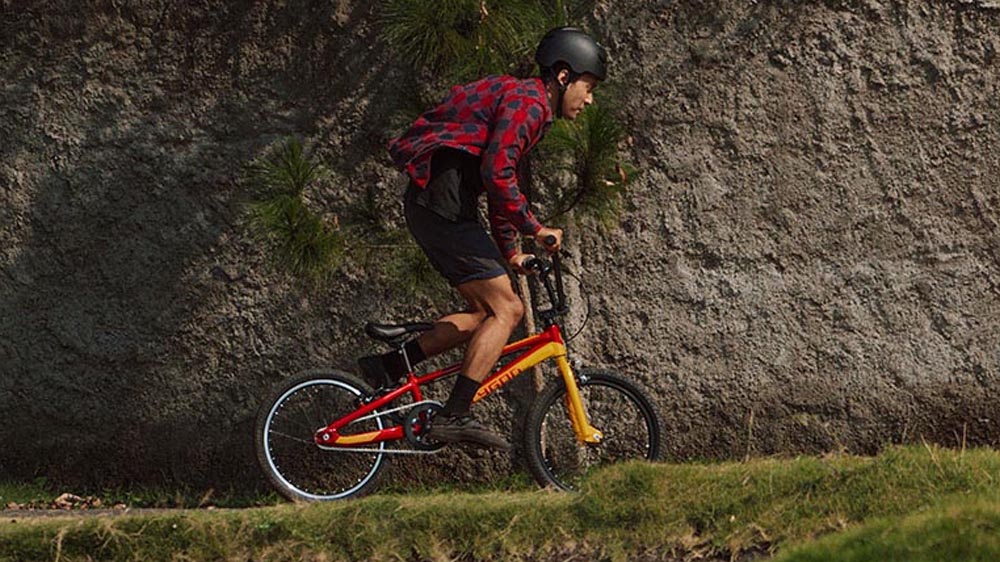
At its heart, a Bike Trial is about navigating a sectioned course full of challenges—rocks, logs, walls, or urban structures—without letting your feet, hands, or bike touch anything off-limits.
The UCI recognizes two main categories:
- 20-inch bikes (mod) – Agile and technical, perfect for tight, complex moves.
- 26-inch bikes (stock) – Longer reach for bigger gaps and a feel closer to mountain bikes.
Each course is broken into “sections,” and riders have a set time to finish each one. Touch the ground or stray off course, and you earn penalty points. The rider with the fewest points wins.
In the US, bike trial competitions often share space with BMX and mountain biking events, helping riders cross-train and discover new cycling disciplines.
Outside the UCI, the BikeTrial International Union (BIU) keeps the sport’s grassroots spirit alive with creative and technically demanding events.
The Core of Bike Trials
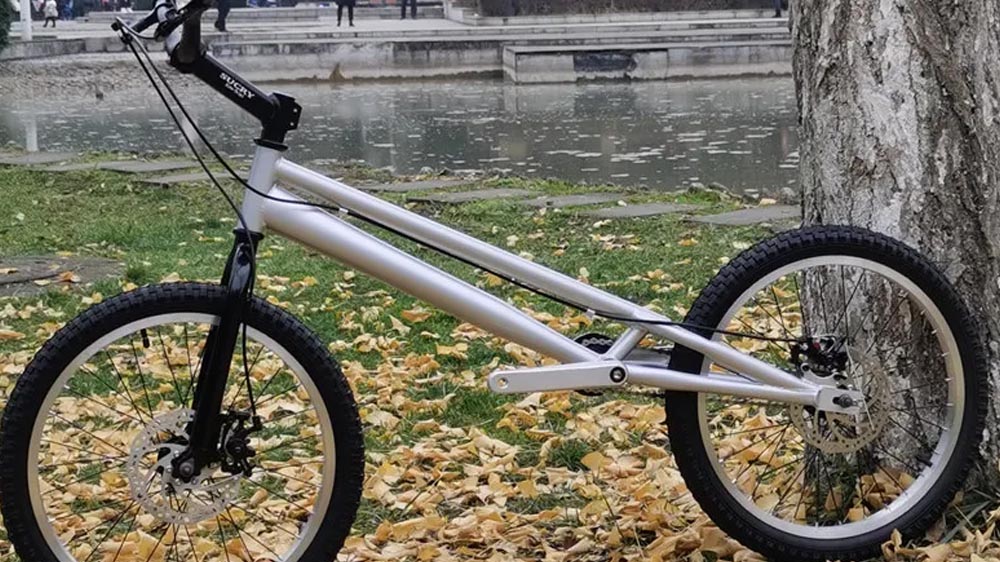
A bike trials bike is a minimalist powerhouse, sharing roots with BMX bikes but stripped for precision. Key features include:
- Frame: Lightweight, rigid, often chromoly, built for hops and drops.
- Wheels: 20-inch for nimble maneuvers; 26-inch for stability on larger obstacles.
- Drivetrain: Single-speed with high-torque gearing for quick bursts.
- Brakes: Hydraulic rim or disc brakes for locking wheels in place.
- Saddle: Minimal or absent, as riders stand for maximum control.
Brands like Polygon craft trials bikes that prioritize balance, perfect for US riders tackling urban courses in cities like Portland or natural trails in Utah. These bikes are built for short, intense bursts, not long rides, making them ideal for mastering bike trials disciplines.
Skills Every Beginner Should Master
No rider starts with back wheel hops onto giant boulders. The best in the sport began with small, controlled moves practiced over and over.
Success in bike trials disciplines starts with mastering foundational techniques. Practice these in a driveway or local park before hitting full courses:
- Trackstand: Balance motionless with a slightly turned front wheel, using micro-movements in pedals and bars to stay upright. It’s the cornerstone of trials.
- Brake Control: Use brakes as an anchor, locking the rear wheel while shifting weight to hold positions. Practice smooth transitions to avoid jerky stops.
- Pedal Hop: Lift both wheels with a quick pedal burst to clear small obstacles. Compress, then “pop” upward, keeping bars light.
- Side Hop: Jump sideways onto ledges by compressing pedals evenly and pulling the bike toward the target. Lock brakes on landing to stay put.
- Front Wheel Pivot: Lock the front brake and swing the rear wheel for tight turns. Shift weight forward and guide the bike with your hips.
- Rear Wheel Hop: Advanced riders hop or balance on the rear wheel, combining brake precision and power for dynamic moves.
The Competitions That Push the Limits
While you can practice Bike Trials anywhere—a driveway, park, or urban plaza—the sport shines brightest in competition.
UCI Trials World Championship — The Apex of Bike Trial Skill
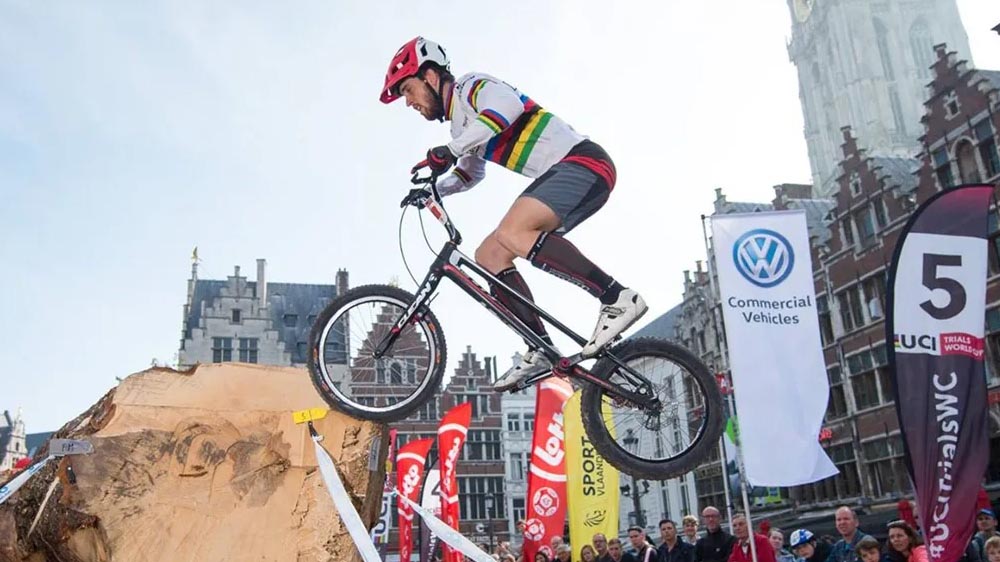
The UCI Trials World Championship stands as the premier global event in Bike Trial competition, setting the standard for excellence in both 20-inch (mod) and 26-inch (stock) wheel categories across male, female, junior, and elite classes.
Organized by the Union Cycliste Internationale, this championship challenges athletes to demonstrate unparallel precision and composure under strict penalty rules for touches, boundary infractions, and time overages.
Champions earn the iconic rainbow jersey, a symbol of their mastery, and recognition that lasts until the next championship cycle
UCI Urban Cycling World Championship — Trials in the City Core
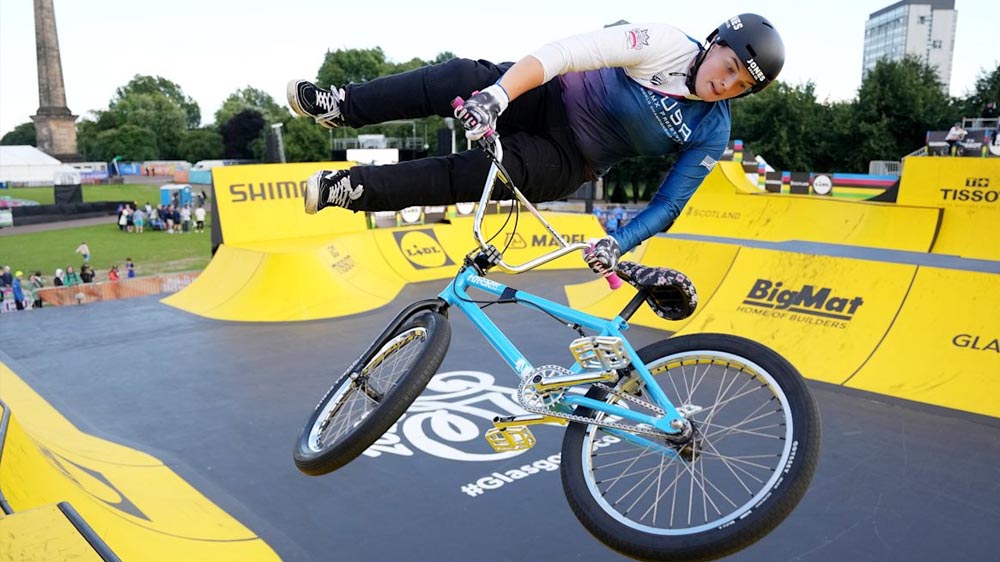
Launched in 2017, the UCI Urban Cycling World Championship brings Bike Trials into vibrant, urban spaces, blending the discipline with BMX freestyle and mountain bike eliminator races.
This urban format showcases riders mastering technical obstacle navigation at street level, delivering a dynamic spectacle that draws spectators into the energy and artistry of trials, while promoting cross-discipline appeal in public settings
BIU Competitions — Upholding Tradition with Creative Challenge
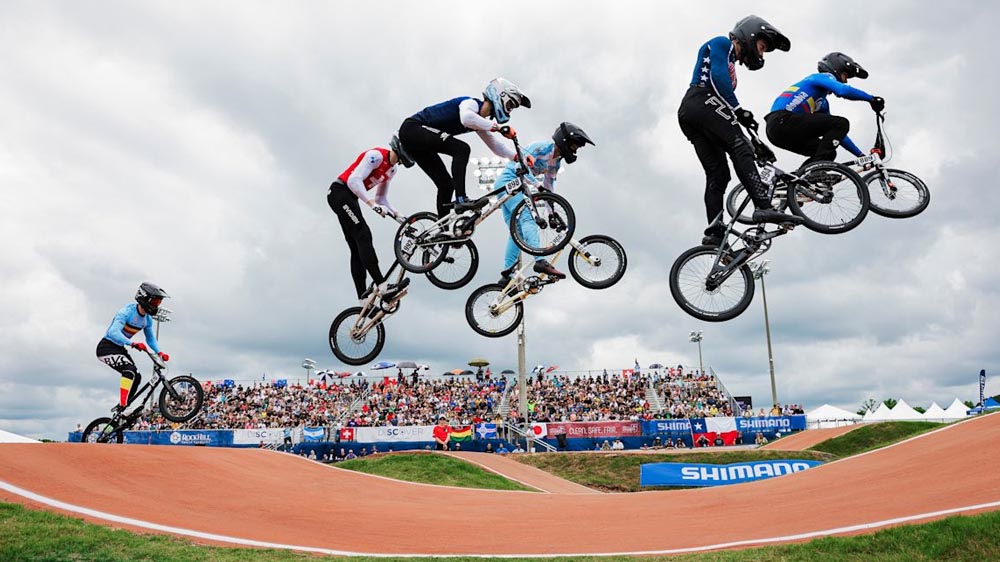
The BikeTrial International Union (BIU) preserves the sport’s original spirit through competitions that emphasize creative technique and technical inventiveness. Under BIU rules, riders may legally rest parts of their bike (like cranks or bash guards) on obstacles—an allowance that encourages imaginative approaches.
Competition formats are established with historical formats in mind, focusing more on skill complexity than rigid boundaries, ensuring that tradition and innovation ride hand in hand
Each event showcases a different side of bike trials—from pure technical mastery to high-energy crowd entertainment.
Tips for Getting Started in Bike Trials
- Pick Your Discipline: Start with a 20-inch mod bike for technical precision or a 26-inch stock bike for stability, depending on your terrain.
- Practice Basics: Begin with trackstands and pedal hops in a safe space, like a local park.
- Join the Community: Connect with bike trials groups or mountain bike clubs in your area to learn from experienced riders.
- Prioritize Safety: Wear a helmet and pads, as falls are part of the learning process.
The Global Appeal of Bike Trials
Bike trials disciplines transcend borders, uniting riders from US cities to European parks. The sport’s emphasis on creativity—building courses from anything at hand—makes it accessible worldwide, much like BMX or mountain bike scenes.
Whether you’re hopping logs in Oregon or urban obstacles in Tokyo, trials fosters a global community of precision and passion.
Read also
Why Polygon Is Your Go-To Cycling Partner
In Bike Trial, the tiniest details—like how your brakes are tuned or which tires you choose—can be the difference between nailing a section and racking up penalty points. That’s why having dependable advice and the right gear is essential.
Polygon has earned its place as a trusted name in cycling by delivering expert guidance, top-tier equipment, and a welcoming community where riders share tips and experience.
While Bike Trials aren’t about flat-out speed, they’re every bit as adrenaline-packed as a race. It’s a sport that tests your focus, balance, and bike-handling skills in ways most riders never imagine.
From mastering your first trackstand to chasing championship titles, the journey is just as exciting as the finish line—and Polygon is here to make sure you enjoy every step (or hop) along the way.









